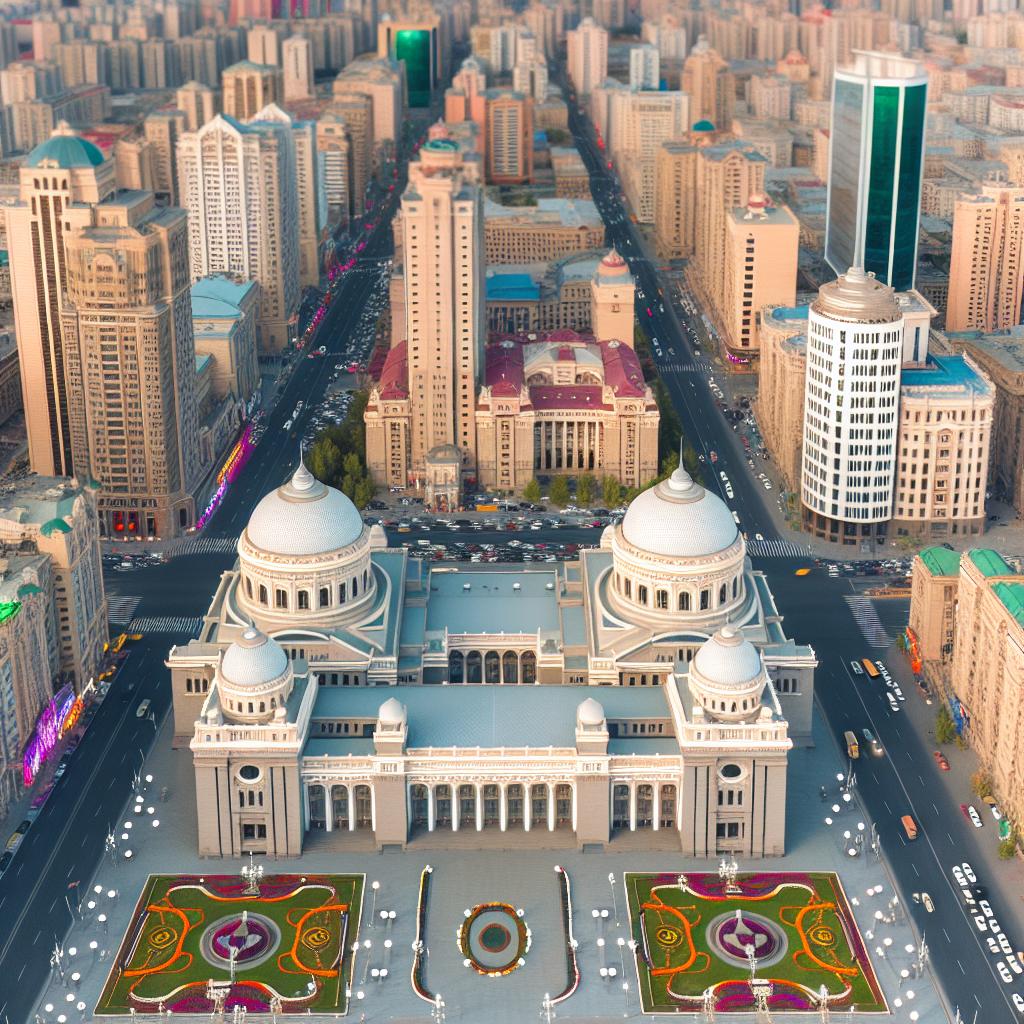The Bolshoi Theatre
The Bolshoi Theatre stands as one of the most renowned opera and ballet houses across the globe. With its inception dating back to 1776, it has become a cornerstone of Moscow’s cultural identity and heritage. The theatre is not just an ordinary venue; it is an emblematic landmark that has been a silent witness to the unfolding of centuries of Russian history. Nestled in the heart of the city, the current grand edifice that visitors admire today was crafted by the skilled architect Joseph Bové. Completed in 1825, following a devastating fire that razed the original structure, the building is a magnificent display of neoclassical architecture, adorned with a splendid facade and a lavishly embellished interior that speaks volumes of its historical significance.
Performances and Repertoire: Among the factors that contribute to the Bolshoi Theatre’s global prestige is its extensive and diverse repertoire. The theatre takes pride in hosting a vast array of performances, encompassing classical masterpieces as well as contemporary compositions, thereby appealing to a wide range of audiences. Renowned particularly for its ballet performances, the Bolshoi Theatre does not fall short in the domain of opera. It features operatic works composed by both Russian maestros and international composers. Bolstering its global acclaim are the extraordinary talents of the theatre’s orchestra, choir, and soloists, each contributing uniquely to the tapestry of performances held within its storied halls.
For those eager to delve deeper into the performances and happenings at the Bolshoi Theatre, visiting the official website of the Bolshoi Theatre offers a portal to explore current and upcoming events and performances.
The Mariinsky Theatre (Historic Association)
In the discourse of Russian opera, the Mariinsky Theatre, though geographically situated in St. Petersburg, possesses a profound historical connection to Moscow’s opera landscape. Over the years, numerous collaborations and exchanges between the Bolshoi and the Mariinsky have enriched Russian operatic traditions, allowing for a cross-pollination of ideas and artistic practices. This historic symbiosis ensures that the Russian opera scene remains vibrant and innovative.
The Mariinsky Theatre is particularly noted for its steadfast dedication to Russian compositions. By championing Russian music and theatrical pieces, the Mariinsky has cast a significant influence on the performances that captivate audiences on Moscow’s stages, crafting a shared cultural narrative punctuated with exquisite Russian artistry.
The Novaya Opera Theatre
In the evolving narrative of Moscow’s operatic traditions, the Novaya Opera Theatre emerges as a relatively new entrant with its inception in 1991. In stark contrast to the venerable Bolshoi, Novaya Opera injects a breath of fresh air into the city’s operatic circles. Despite its relatively recent establishment, the theatre has rapidly carved out a commendable reputation, being renowned for its consistent innovation and quality productions.
The theatre’s repertoire stands as a testament to its dual commitment to honoring the legacy of classical works while also embracing modern compositions. This diversity in its offerings provides an excellent platform for emerging artists and experimental productions, thereby expanding the geographical and creative boundaries of Moscow’s operatic scene.
Notable Productions: The Novaya Opera Theatre has been lauded for its remarkable renditions of works from composers such as Verdi, Rimsky-Korsakov, and Tchaikovsky. By adopting a contemporary approach, the theatre succeeds in resonating with a diverse audience, making opera more accessible and engaging to younger generations who are eagerly stepping into the world of opera.
For a comprehensive insight into the Novaya Opera Theatre, including its season schedule and upcoming performances, you can visit the official website of the Novaya Opera Theatre.
Moscow State Stanislavsky and Nemirovich-Danchenko Music Theatre
This venerable institution uniquely intertwines the realms of drama, opera, and ballet, carrying forward the illustrious legacy of Konstantin Stanislavsky, after whom it is named. The Moscow State Stanislavsky and Nemirovich-Danchenko Music Theatre has been an integral part of Moscow’s theatrical world since its establishment in 1941. The theatre is celebrated for its unyielding commitment to fostering innovative productions that blend the finest elements of traditional and modern artistic expressions.
Artistic Contributions: The theatre is distinguished by its imaginative staging of operas and ballets, which have made significant contributions to the continuous evolution of Russian performing arts. Its repertoire is an exciting blend of Russian classics and fresh compositions, vividly showcasing the adaptability and artistic versatility of its performers.
For those interested in exploring more about the performances and various offerings of the theatre, you can visit the website of the Stanislavsky and Nemirovich-Danchenko Music Theatre.
Conclusion
Moscow, with its rich tapestry of opera houses, offers an enchanting journey through the landscape of performing arts. From the time-honored prestige commanded by the illustrious Bolshoi Theatre to the vivacious and innovative flair represented by the Novaya Opera Theatre, each venue plays a seminal role in defining and enhancing the artistic panorama of the city. Serving as custodians of both tradition and innovation, these institutions tirelessly continue to invigorate and inspire audiences with their diverse, imaginative offerings.

